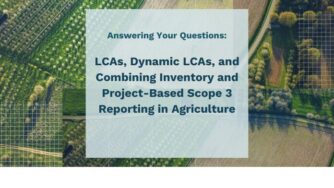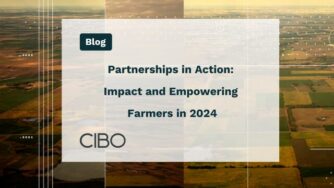In recent years, there has been an explosion of awareness and increased consciousness around climate change. Corporations are making very bold proclamations and commitments from the boardroom out to their supply chains. As a result, more and more companies around the world are stepping forward with climate commitments. However, these voluntary commitments often lack regulatory or legal definitions, making them challenging to understand. So how can we better understand corporate carbon commitments?
CIBO’s Senior Director of Product Management Chuck Alexander walked us through the many initiatives companies are pledging to follow in order to reduce their climate impact. Chuck broke down the concepts and initiatives behind companies’ climate pledges. We uncovered the verification, validation and certification that goes on behind the climate initiatives.
It can be confusing, but by understanding the history of how we got here and the common thread that ties all of us and all these programs together we can break it down. Ultimately, these climate commitments are driving toward the same fundamental goals of reducing the increase of global climate by a certain amount and by reducing carbon dioxide amounts.
As companies and organizations are getting started, they need to know the overall carbon footprint (greenhouse gas inventory) of their company. The first step is figuring out their carbon footprint so they know where they need to start/go next. Then they can figure out where they need to make changes. Creating your organizational carbon footprint will highlight what you need to change in order to reach your goals. The CIBO platform can help organizations manage, monitor, and measure the carbon footprint of ag operations.
Watch our recording to hear our detailed discussion of the history of GHG programs, where to start your corporate climate commitment journey, and more. See some of the questions from our live audience and their answers below!
Questions from the Audience
If a company or organization develops the technology (science) to expand carbon capture as the generation of GHG is reduced dramatically…how can that be “certified” and thereby monetized?
Sequestration, especially in soil, is interesting because the measurements and the proof require that the sequestrations are real.
Two approaches:
- Sequestration and carbon capture technology in the soil.
- De-carbonization and greenhouse gas emission reduction of the actual processes which prevents CO2 from going into the atmosphere.
We work with agricultural producers who are interested in incorporating carbon practices into their operation. With a large percent of US farmland operated under a lease, is there an opportunity for a short term (1 to 3 years) carbon program?
Yes there are opportunities for growers in the US to enter into short term carbon programs. There is a difference between a voluntary carbon market and a regulated carbon market. CIBO has created a science based voluntary carbon marketplace where, specifically growers, can implement these sustainable practices that will generate carbon credits and once it is verified through our technology we can make sure there is actually a carbon sequestration effect and GHG emission reduction that is based on science.



